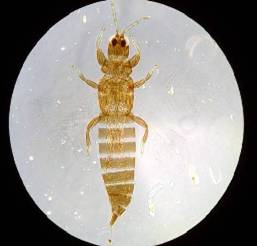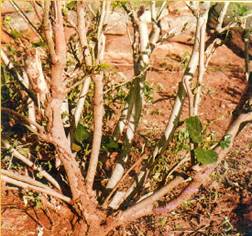INSECT PESTS OF MULBERRY
1. |
Pink mealy bug: Maconellicoccus hirsutus |
2. |
Papaya mealy bug: Paracoccus marginatus |
3. |
Leaf webber: Diaphania pulverulentalis |
4. |
Thrips: Pseudodendrothrips mori |
5. |
Termite: Odontotermes obesus |
1. Pink mealybug
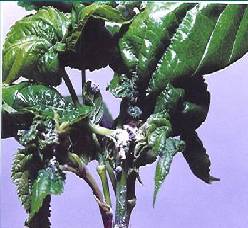
Type of damage
- Nymphs and adults suck the cell sap from tender leaves and buds.
- Nutritive value of leaves, leaf yield and plant height are drastically reduced.
Symptoms
- Malformation of the apical shoots, retarded growth, wrinkling and curling of the affected leaves, become dark green in colour.
- Leaves become pale yellow on severe infestation.
- Affected portions become brittle.
- Symptoms are collectively called as Tukra (Bushy top) disease
Management
- Cutting the affected shoots and burning
- Spraying Fish Oil Rosin Soap (FORS) @ 40 g/l or dichlorvos 76 WSC @ 2 ml/l, (safe waiting period: 15 days)
- Releasing Cryptolaemus montrouzieri @ 750 beetles/ha and Scymnus coccivora @ 1000 beetles/ha.
Papaya Mealy Bug
Paracoccus marginatus Williams & Granara de willink (Pseudococcidae : Hemiptera)
It is a new record, exotic in origin and seems to have been introduced into India. It is an invasive pest on wide variety of commercial crops.
Symptoms and damage
- Apical portions are affected initially and thereafter, it spreads all over the plant affecting even woody regions
- Malformation of affected portion due to toxin injected during feeding
- Stunted growth of plant and yellowing of leaves
- Sooty mould on leaves and plants due to honey dew secretions of the pest
- Movement of ants in the vicinity which help in spread of the mealy bugs
- Outright killing the plant in case heavy infestation
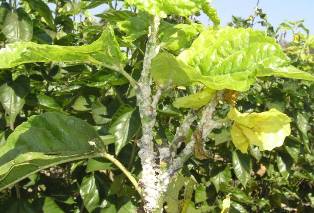 |
PAPAYA MEALYBUG |
Parasitoids
NBAII has successfully imported the three Encyrtid parasitoids viz., Acerophagus papaya, Pseudleptomastix Mexicana and Anagyrus loecki with the help of USDA-Animal and Plant Health Information Services from Puerto Rico and completed all the mandatory safety and specificity tests in the quarantine facility.
Mass production
The parasitoids can successfully be multiplied in the laboratory on Paracoccus marginatus colonies grown on potato sprouts and shoots.
Strategy for classical biological control
|



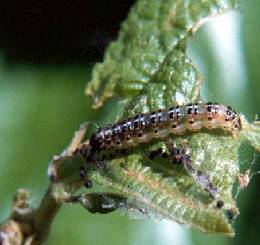
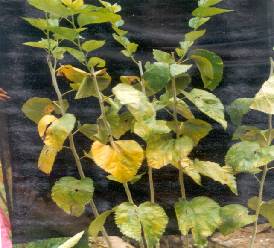 ..
..